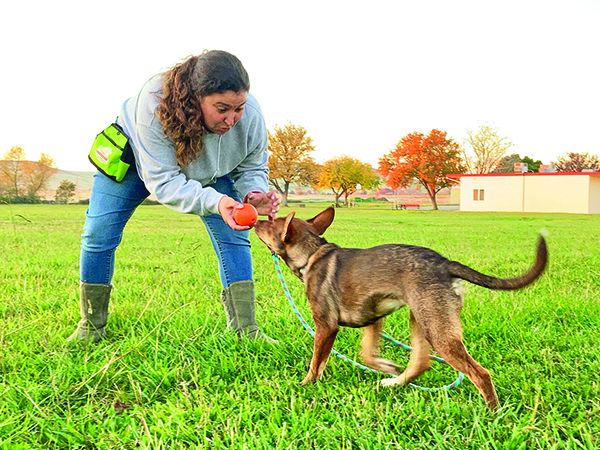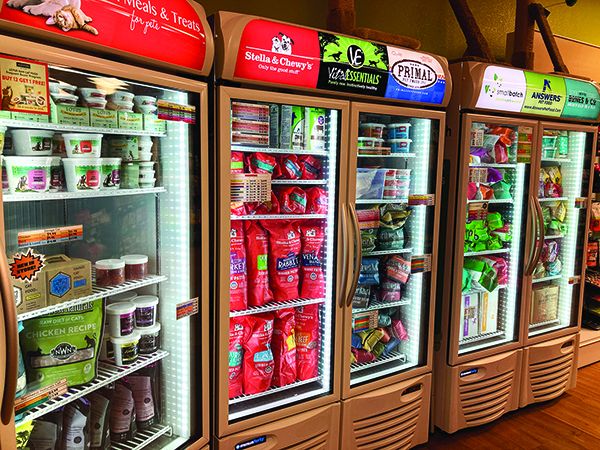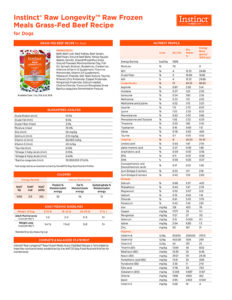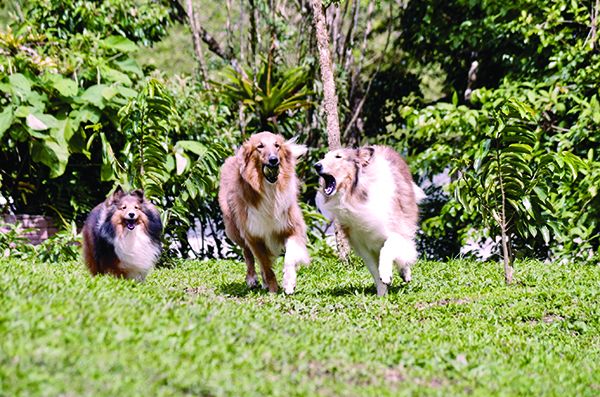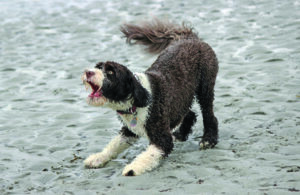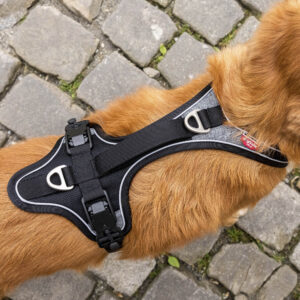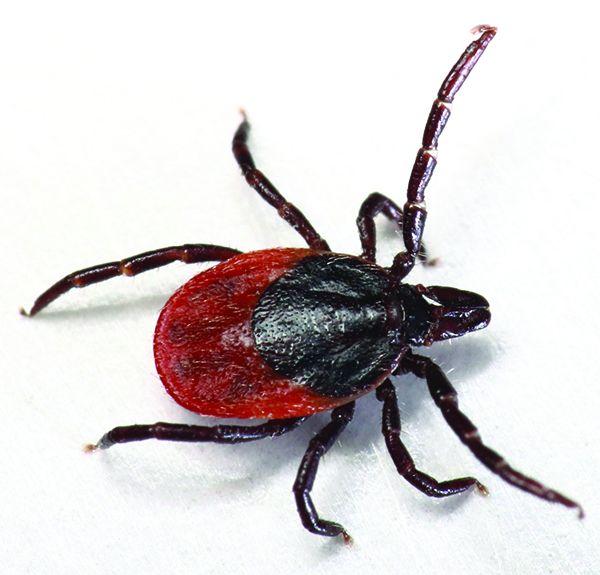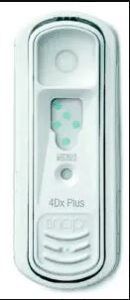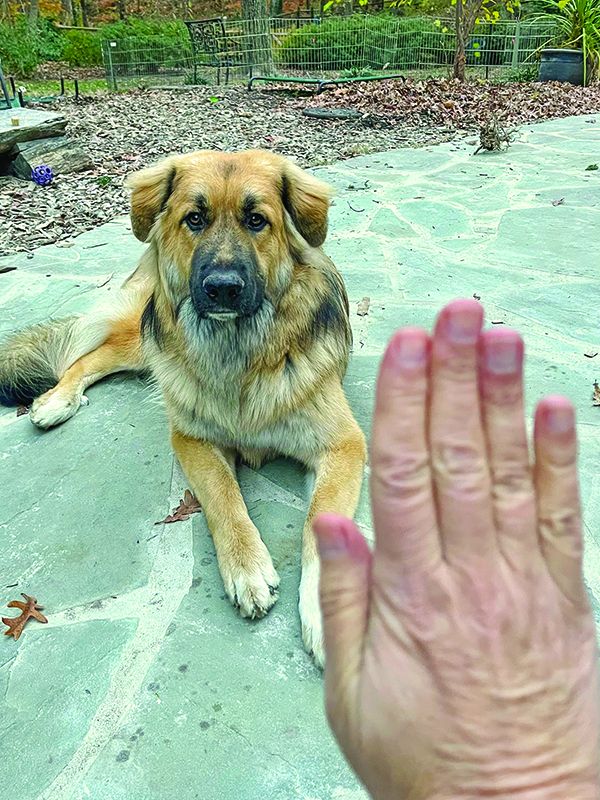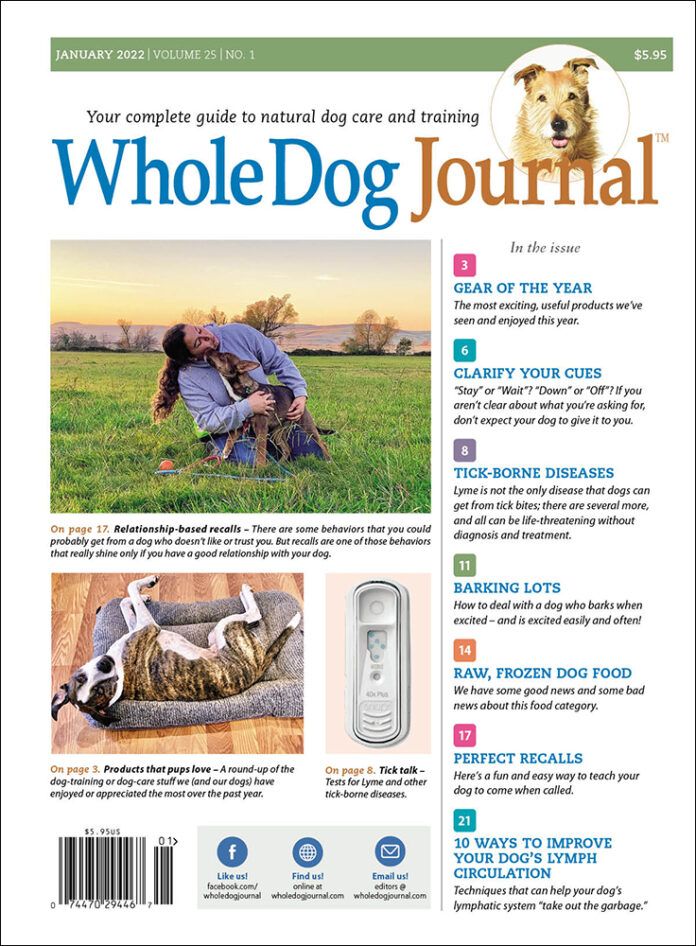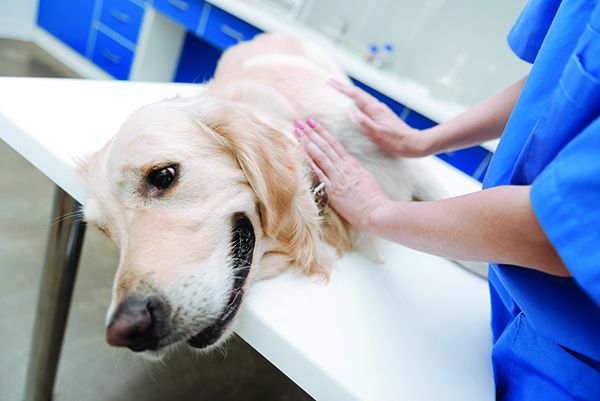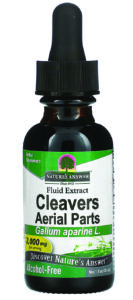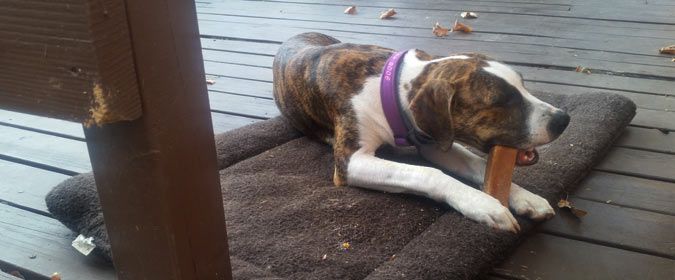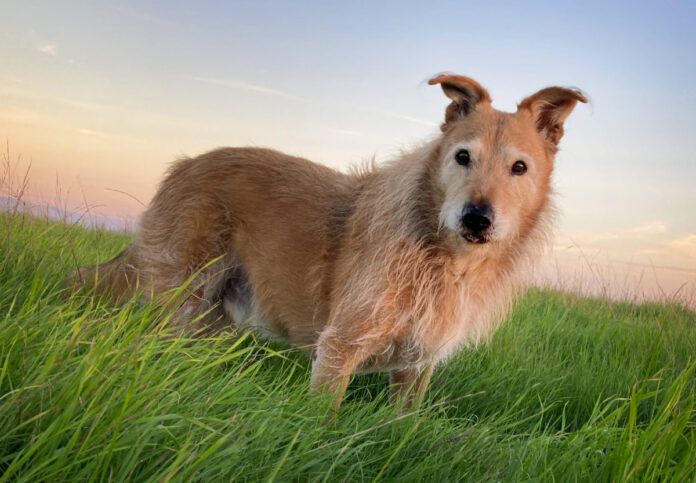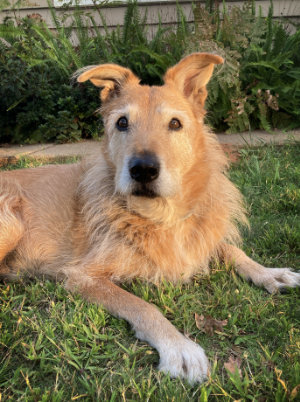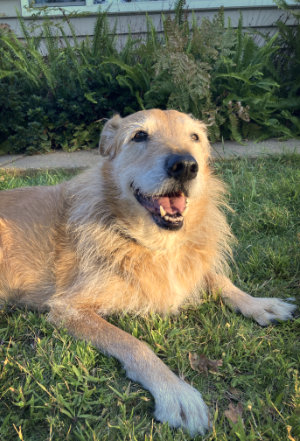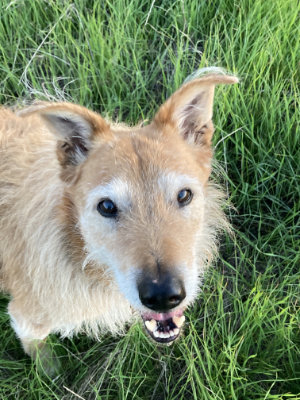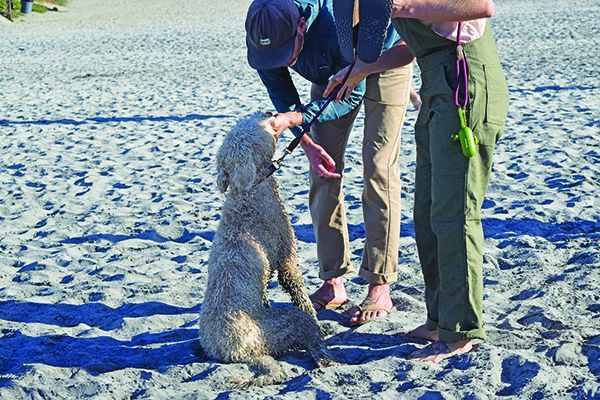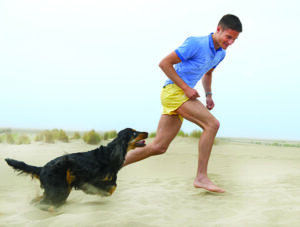Coming when called – a “recall” as it’s often known in dog-training circles – is arguably the most important behavior you can teach your dog. It can literally save his life. Imagine your dog gets loose and is heading for danger. When you call him, you want him to turn on a dime and race back to you so fast that it looks like his rear end is on fire and you have the only hose in town!
The trick to teaching a reliable recall is to set up your dog to successfully practice getting it right over and over again. Repetition rules in recall training. Your goal is to create so many successful training repetitions that turning and racing toward you becomes more like a reflex: When he hears the recall word, his body automatically turns toward you and he happily races back to you.
Think about when you first learned to drive a car. In the beginning, you had to concentrate on each individual behavior. Seatbelt on. Foot on the brake, start the car and put it in gear. Check the mirrors. Ease off the clutch or brake and onto the gas, and so on. But today, you probably drive without thinking about each adjustment you make to the pedals or steering wheel.
Similarly, it takes hundreds of successful repetitions to make coming when called a reflexive action for your dog, but don’t worry. Accomplishing that much training is easier than you think.
DOG RECALL TRAINING TECHNIQUES
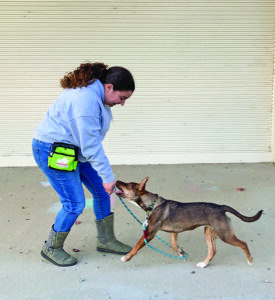
Before you begin, pick a word to be your special dog recall word or cue. If you’ve been using “Come!” with mixed results, start fresh with a new word like, “Here!” or “Quick!” – and once you’ve chosen a cue, consider it sacred during the early months of your training program. Use this cue only when you are training, not for casual moments around the house.
The first step is designed to be simple for the dog, and to introduce the pattern of behavior into your dog’s mind. I do this by enthusiastically luring my dog toward me while quickly backing up about five or six steps and saying his name and special recall word. (“Saber, here!”) With your dog on a regular four- to six-foot leash, move backward as swiftly as your dog will follow, keeping your treats within licking distance.
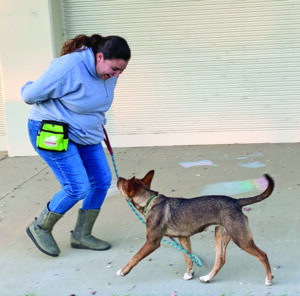
Another fun way to do this (and if backing up is unsafe or difficult for you), is to turn and quickly run several steps away, and have a happy party as you feed him treats when he gets to you.
After five or six steps, stop and reward generously. Use lots of tiny treats paired with praise and petting (in a way you know your dog enjoys) for 15 to 20 seconds. Repeat this process five times in a row at least three or four times per day. Five repetitions in a row over three or four short training sessions per day gives you 15 to 20 reps per day. And each session takes fewer than five minutes!
After about five days of diligent practice, keep all the steps the same except the part where you hold the treat within licking distance of your dog. We don’t want him to think he has to see the treat in order for the recall word to be rewarding. Conceal the treats in your pocket or treat pouch, but be sure to reward just as generously.
Remember: this is supposed to look and feel easy. Avoid the temptation to try and make it harder for your dog at this early stage. We’re building a strong foundation. Just as a house falls apart without a solid foundation, a recall falls apart in the face of distractions when it lacks a solid foundation.
One of the biggest mistakes people make when training the recall is to practice a handful of times at home and then expect the behavior to hold up away from home and in the face of distractions. We want to adequately train the behavior before we start testing it out!
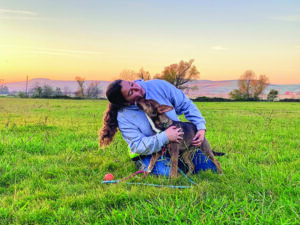
It bears repeating: Recall is a relationship-based behavior. Your dog’s willingness to do it depends entirely on how much he trusts that returning to you will be worth his while. If your dog is ambivalent about his relationship with you, his response to a recall cue is likely to be ambivalent, too. If you are not in the habit of reinforcing your dog for the behaviors you’ve asked him for (or, worse, if you’ve meted out some aversive consequences to him), he may choose to ignore your cues, avoid you, or just take time after hearing your cue to “read the room” – to try to gauge whether you are likely to administer an aversive or a reinforcement.
This isn’t a judgment on any dog who does this; the fact is, it’s natural and normal for dogs to consider the consequences of any options in front of them and to choose whichever option is the most enjoyable (a.k.a., the least aversive). It’s poetic to think our dogs live to please us, but that’s just not true; they consider “What’s in it for me right now?” and do what works best for them. The sooner we accept this fact – and use our intelligence to set up training sessions so that our dog’s most enjoyable choice is to do what we want him to do, the sooner we become good dog trainers!
If you’re having trouble with recall, I urge you to think about your relationship and training style with your dog. The more enjoyable and interesting you are to your dog – and the more you’ve shown him that you can be counted on to provide good things, the more motivated your dog will be to come to you when you call him. In contrast, if you’ve been physically or verbally harsh or scary with him, he’s naturally going to think twice before coming to you. But in any sort of emergency, you don’t want your dog to hesitate to come to you; you want him to know, instantly and unequivocally, that racing to you immediately will result in all the things he likes best: food, fun, praise, attention, and affection.
TAKE IT ON THE ROAD
As your dog starts responding confidently to his recall word at home, practice the behavior while on your daily neighborhood walk. You can back up to step one and have treats at his nose-level for the first few days, especially if he’s distracted by the environment.
If he’s too distracted to focus on your treats, try experimenting with higher-value treats or toys if your dog prefers games like tug. Use very high-value treats – cooked meat, cheese, freeze dried liver, etc. And cut the treats into small pieces, so you can feed a lot of them!
Don’t get too concerned if your dog is so distracted by away-from-home environments that not even high-value treats hold his attention. Some dogs need to take in the environment before working. Maybe they’re genuinely curious, or maybe they’re a little nervous and need to make sure it’s safe. Giving dogs permission to check out their environment – without asking, nagging, or begging them to pay attention – while generously rewarding their choice to interact with us, can help prepare them for whatever training we have in mind. Continue to practice at home – and consider setting up acclimation trials in new locations.
ACCLIMATION TRIAL
To do this, pick a novel location, plant your feet, and let your dog explore to his heart’s content – but only as far as he can reach via the fixed radius of the leash. Don’t pull or tug on the leash; if he’s pulling, just pretend you are a post and simply resist his pulling. And don’t ask your dog for attention; this is his time. However, if he turns and looks at you, as if to say, “Um, are we going to do something?” offer copious praise and feed him a number of tiny, delicious treats, one at a time, so long as you hold his attention.
If you lose his attention, go back to ignoring him as you stand your ground. Relax and commit to standing there for as long as it takes for him to get bored with looking or sniffing within the length of his leash. If after 10 minutes or so, if he’s still fixated on everything/anything other than you, you may need to choose a slightly less fascinating novel location – for example, a big empty parking lot rather than a forested park. Meanwhile, continue your recall training at home and in other areas where your dog can successfully focus on you and your treats.
If you keep his attention, ask for a simple behavior such as “sit” or “down” and reward with a treat. If he stays focused on you, try practicing the the recall exercise.
ADD DISTRACTIONS TO YOUR DOG RECALL TRAINING
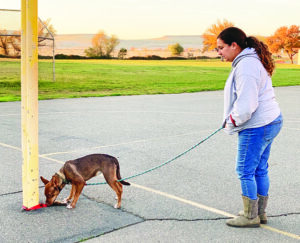
After about three weeks of regular, on-leash foundation training (and remembering not to use the special recall cue outside of these training scenarios), you’ll likely find that your dog is happily running toward you as you call him and move away. Congratulations! You’re building a solid foundation! Keep doing what you’re doing, but now we’re ready to introduce the concept of purposefully turning away from a distraction.
A dog’s ability to turn away from distractions (in favor of running back to you) will make or break the recall. When a dog is off-leash, it’s especially easy to become distracted. We need to teach the dog that coming when called – leaving really interesting stuff behind – is still worth it.
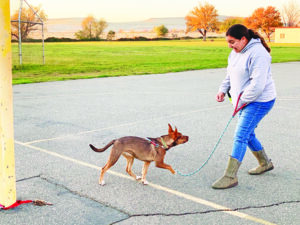
If you’ve been diligent with your early recall homework for just three weeks, your dog has already been generously rewarded for quickly running toward you close to 300 times. That gives him a great head start on this next step. To be fair to the dog, please don’t attempt this step before completing three weeks of the early foundation training.
With your dog on a leash, walk him up to a low-level distraction like a familiar bush or tree. Allow him to investigate and as he does, step behind him and go to the end of your leash, keeping it loose. Be ready with treats hidden in your hand behind your back. Happily call his name and his recall word. Be ready for one of two things to happen:
- He eagerly whips his head around, leaving the distraction and runs toward you. As this happens, remember to move away from him, giving him the opportunity to chase you for a few steps. Party like a rock star with praise, petting, treats, and general merriment lasting 15 to 20 seconds.
OR . . .
- Your dog ignores the recall word and continues investigating the distraction. If this happens, one of two things have probably gone wrong: Either you didn’t practice the earlier steps enough, or you’ve picked a distraction that’s far too distracting!
In this case, use a small squeaky toy (keep a “naked” squeaker in your pocket for this occasion) or make some other unusual or exciting noise (such as a whistle or a verbal squeak) to get your dog’s attention. If he turns back to you, mark the physical action of having turned away from the distraction (with the click of a clicker or a verbal “Yes!” or “Good!”), repeat the recall word and back or run away, getting him to chase you and rewarding him generously after several steps.
However, if he ignores your exciting noise, or you have to make several noises, your training is going off course. You need more repetitions, better rewards, and/or a lower-level distraction.
Revisit Steps 1 and 2, practicing in your house and yard, with at least five repetitions at least three times a day. Practice these distraction set-ups with your dog on-leash (a regular 6-foot leash is best), and be generous with your rewards until your dog is happily and reliably doing a whiplash-type turn in your direction every time you use your recall cue at home.
MAKE YOUR RECALL TRAINING AN EVERYDAY ROUTINE
Dog recall training should be part of your daily routine with your dog. In working with my own dogs, I make a point to call them away from minor distractions at least a few times during every walk.
In addition, I use my dog recall word every time I set down a bowl of food, and any time I find leftover treats in one of my pockets (“Saber, here!) for some simple classical conditioning/pairings of the recall word with wonderful things. He may be right next to me, but when he hears his special word, food magically appears!
Also, in any off-leash situation we’re in, I make a point to call my dog to me several times, just so I can generously reward him and then release him back to his freedom. That way, he’s less likely to think being called means it’s time to leash-up and go home, thus ending the off-leash fun.
Train with a leash! Set your dog up for success both when training and in life. And if you don’t trust his recall, or local ordinances require it, keep your dog on leash. The best-trained dogs can be led astray by the scent of a critter, many of which are most active at dawn and dusk.
Never call your dog to you for something unpleasant. If you need to do something your dog may consider unpleasant, calmly walk up to him, ask him to sit, feed a treat, attach the leash, feed another treat, and walk him wherever you need to go.
Reward generously. Convince your dog that hearing his recall word is like winning the doggy lottery. Use small, soft, high-value treats that can be broken into many small pieces. A piece of cheese the size of a game die can be pinched into 10 or more small treats. Ten small treats, clearly fed one at a time while you lavish praise and petting in ways your dog enjoys, are better than one large treat. It’s dog math!
Don’t overuse the recall word. My recall word (“Here!”) is reserved for situations where there’s more at risk, either because my dog is off leash, or because there is a situation that might go sideways. If I’m casually walking down the hall and want my dog to follow me, or I’m trying to call him inside, I use a more casual phrase such as, “C’mon… let’s go…” or “C’mon … inside.”
Avoid static recalls. Dogs love to chase stuff. Rather than stand still as you call your dog, scamper away so he gets to chase you.
It’s okay to always use food! For the life of my dog, especially when I choose to let him off-leash somewhere (thus upping his access to distractions), I will always bring treats and reward heavily. This does not mean he’s not well trained; it means I understand I’m asking him to do something challenging and I’m willing to pay well for this, and to maintain the behavior. He doesn’t need to come when called “because I said so.” Try to keep ego out of your training!
LEARN FROM MISTAKES
Sometimes, despite your best efforts, you’ll call your dog and his response will look more like “Hold on a sec. I’m busy,” than “Woohoo! That’s the party word! I’m on my way!”
You might be tempted to repeat your recall word, perhaps with an edge of “authority” in your voice – but don’t do it! Instead, try using whatever phrase you use casually around the house (such as “C’mon… let’s go!”) as you clap your hands and run away from your dog, encouraging him to chase you – and, despite the fact that he didn’t come immediately, reward him generously.
Now, think about what was holding his attention – and think about what type of distractions often seem to present the biggest challenge for your dog. His “mistakes” are giving you valuable information! Once you identify what situation, sights, or smells make it difficult for him to “hear” your cues, you can set up training trials to address them.
For example, if squirrels are the Achilles’ heel of your dog’s recall, ask your dog for recalls only when your dog is on leash and first notices the squirrel; if he’s already in full lock-and-load mode, you are setting him up to fail. If scavenging for food is a pastime that challenges his ability to come when called, safely enclose a low-level food item in a secure, vented container so your dog can’t get to it, and practice calling your dog away. Whatever the scenario, make it easy for your dog to be correct and work your way up to more challenging variations only as he demonstrates proficiency in the easier step – meaning, he can successfully recall away from the distraction without needing an additional prompt.
TRAINING VS TESTING
Always remember: Training happens when your dog is on leash. If your dog is off-leash, you’re testing what he knows, not training. The more you train, the better prepared you’ll both be to ace the next test!


